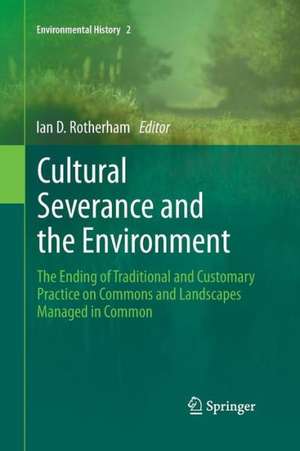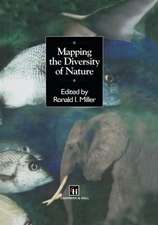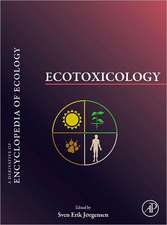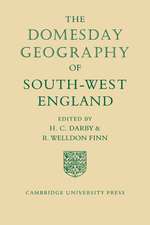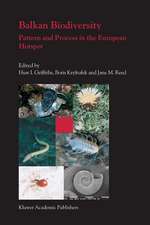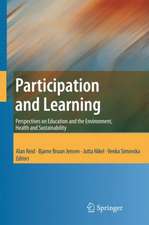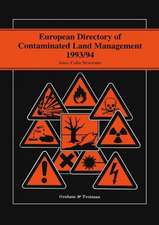Cultural Severance and the Environment: The Ending of Traditional and Customary Practice on Commons and Landscapes Managed in Common: Environmental History, cartea 2
Editat de Ian D. Rotherhamen Limba Engleză Paperback – 13 iun 2015
| Toate formatele și edițiile | Preț | Express |
|---|---|---|
| Paperback (1) | 648.42 lei 43-57 zile | |
| SPRINGER NETHERLANDS – 13 iun 2015 | 648.42 lei 43-57 zile | |
| Hardback (1) | 663.79 lei 43-57 zile | |
| SPRINGER NETHERLANDS – 23 mai 2013 | 663.79 lei 43-57 zile |
Din seria Environmental History
-
 Preț: 128.54 lei
Preț: 128.54 lei -
 Preț: 170.50 lei
Preț: 170.50 lei -
 Preț: 85.24 lei
Preț: 85.24 lei - 15%
 Preț: 650.04 lei
Preț: 650.04 lei - 18%
 Preț: 957.13 lei
Preț: 957.13 lei -
 Preț: 383.51 lei
Preț: 383.51 lei - 18%
 Preț: 1105.19 lei
Preț: 1105.19 lei - 18%
 Preț: 949.42 lei
Preț: 949.42 lei - 18%
 Preț: 1004.19 lei
Preț: 1004.19 lei - 18%
 Preț: 957.62 lei
Preț: 957.62 lei - 18%
 Preț: 1399.43 lei
Preț: 1399.43 lei - 15%
 Preț: 707.46 lei
Preț: 707.46 lei - 18%
 Preț: 959.50 lei
Preț: 959.50 lei - 15%
 Preț: 663.79 lei
Preț: 663.79 lei - 18%
 Preț: 1004.00 lei
Preț: 1004.00 lei - 18%
 Preț: 979.70 lei
Preț: 979.70 lei - 18%
 Preț: 954.14 lei
Preț: 954.14 lei - 24%
 Preț: 947.99 lei
Preț: 947.99 lei -
 Preț: 85.48 lei
Preț: 85.48 lei
Preț: 648.42 lei
Preț vechi: 762.85 lei
-15% Nou
Puncte Express: 973
Preț estimativ în valută:
124.08€ • 129.87$ • 103.27£
124.08€ • 129.87$ • 103.27£
Carte tipărită la comandă
Livrare economică 31 martie-14 aprilie
Preluare comenzi: 021 569.72.76
Specificații
ISBN-13: 9789401780520
ISBN-10: 9401780528
Pagini: 460
Ilustrații: X, 447 p.
Dimensiuni: 155 x 235 x 24 mm
Greutate: 0.64 kg
Ediția:2013
Editura: SPRINGER NETHERLANDS
Colecția Springer
Seria Environmental History
Locul publicării:Dordrecht, Netherlands
ISBN-10: 9401780528
Pagini: 460
Ilustrații: X, 447 p.
Dimensiuni: 155 x 235 x 24 mm
Greutate: 0.64 kg
Ediția:2013
Editura: SPRINGER NETHERLANDS
Colecția Springer
Seria Environmental History
Locul publicării:Dordrecht, Netherlands
Public țintă
ResearchCuprins
Part 1: Setting the Scene on Cultural Severance and its Implications.- 1. Cultural Landscapes and Problems Associated with the Loss of Tradition and Custom: an introduction and overview.- 2. Cultural Severance and the End of Tradition.- 3. Globalism and the Enclosure of the Landscape Commons.- 4. A Natural Origin of the Commons: Interactions of People, Animals and Invisible Biodiversity.- Part 2: Case Studies of Cultural Landscapes from Around the World.- 5. Valorising the European rural landscape: the case of the Italian national register of historical rural landscapes.- 6. Severance of Traditional Grazing Landscape in the Himalayas: Commons and Ecosystems in Crisis?.- 7. Early Wood Commons and Beyond.- 8. What, How, and Why? Collecting Traditional Knowledge on Forest Uses in Switzerland.- 9. The History of Utilization and Management of Commons and Consequences of Current Social Change in the Alpine Region of Austria.- 10. Guided Pollards and the Basque Woodland during the Early Modern Ages.- 11. The Evolution of Forest Landscapes in Spain’s Central Mountain Range: Different Forests for Different Traditional Uses.- 12. Of Commoners and Kings.- 13. The cultural landscape of royal hunting gardens from the fifteenth to the sixteenth century in Białowieża Primeval Forest.- 14. The End of Common Uses and Traditional Management in a Central European Wood.- Part 3: The History and Use of Landscape Commons.- 15. ‘A very fair field indeed…’: an Archaeology of the Common Lands of English Towns.- 16. From Pasture Woodland, via Deer Park and Common, to Cultural Severance – a Case Study of the Commons of Ashampstead, Berkshire.- 17. Changing Cornish Commons.- 18. The Commons of the Ancient Parish of Sheffield.- 19. Traditional Uses, Destruction, Survival and Restoration of Common Land: a South Yorkshire Perspective.- 20. Abandoned Landscapes of Former German Settlement in the Czech Republic and in Slovenia.- 21. Land management and Biodiversity through Timein Upper Ribblesdale, North Yorkshire, UK: Understanding the Impact of Traditional Management.- 22. Policing the Commons in the Vale of York, c.1550 - c.1850.- 23. The Parliamentary Enclosure of Upland Commons in North-west England: Economic, Social and Cultural Impacts.- Part 4: Issues and Approaches for Future Commons & Cultural Landscapes.- 24. Biodiversity Conservation and the Traditional Management of Common Land: the Case of the New Forest.- 25. Looking Back to the Future: ancient, working pollards and Europe’s silvo-pastoral systems.- 26. Promoting Stewardship of New Commons: Lessons from Wake Nature Partnership.- 27. End of Tradition, Reworking of Custom: Re-assembling Satoyama Woodlands on Tokyo’s Urban Fringe.- 28. New Commons for Old: Inspiring New Cultural Traditions.- 29. Community Grassland Conservation on a Former Common in the Wye Valley, England.- 30. Upland Wood Pastures.- Part 5: Conclusions & Overview: the Implications of Severance for Future Landscapes.- 31. Concluding Thoughts on the Implications of Cultural Severance on Landscapes, Ecology and People.
Recenzii
From the reviews:
“Cultural Severance and the Environment explores topics related to the ‘eco-cultural’ legacy of traditional management practices of common-held resources. … the specificity of the subject matter will make the book most relevant to students and researchers with an interest in commons and traditional commons management in Europe. Summing Up: Recommended. Upper-division undergraduates, graduate students, researchers/faculty, and professionals.” (J. L. Rhoades, Choice, Vol. 51 (6), February, 2014)
“Cultural Severance and the Environment explores topics related to the ‘eco-cultural’ legacy of traditional management practices of common-held resources. … the specificity of the subject matter will make the book most relevant to students and researchers with an interest in commons and traditional commons management in Europe. Summing Up: Recommended. Upper-division undergraduates, graduate students, researchers/faculty, and professionals.” (J. L. Rhoades, Choice, Vol. 51 (6), February, 2014)
Textul de pe ultima copertă
A standpoint of many of the contributions is that it is important or even vital to understand the past, our history, if we are to address effectively future environmental challenges. Often, this is not the case, since the environment and nature, are treated as ‘natural’ rather than eco-cultural. Issues of common ownership and rights to natural resources present major challenges in the contemporary global world and the market forces of capital driven economics. Yet the long-term consequences, of the separation or severance of people from nature, are tangible and potentially disastrous at many levels. However, most contemporary actions towards conservation and sustainability fail to address this fundamental relationship between communities and local environments. This reflects perhaps, the ethos of Hardin’s 1960s ‘Tragedy of the commons’ and from this perspective the chapters in this volume challenge such precepts and assumptions and through this, raise new and critical paradigms.
In recent years, researchers have turned their attention to issues of landscape change and the eco-cultural nature of the environment. Combined with the impacts and effects of cultural severance, the break between local people and their environmental resources, the cultural nature of landscape is now better understood. However, the implicit importance and significance for conservation of biodiversity, of heritage and consequently for activities such as tourism, are only just receiving wider recognition. The implications of widespread landscape abandonment, rural depopulation, urbanisation, and severance, are dramatic and sometimes stark, with wildfires raging, ecology often in free-fall, and local communities and their traditions displaced.
A first step with all these landscapes is to recognise both the important sites and the critical issues. Then, appropriate protection and conservation must be determined and applied. Finally, there is the potential todevelop new and extended commons as part of a landscape approach to future conservation. However, the cultural past, together now with issues of cultural severance, present enormous challenges for the integration of this knowledge into visions of future sustainable landscapes. Not least of these challenges is the loss of indigenous cultural and traditional knowledge, without which, much future conservation action is jeopardised. This book is intended to raise awareness, to stimulate further discuss, debate and research, and to then turn dialogue into action.
In recent years, researchers have turned their attention to issues of landscape change and the eco-cultural nature of the environment. Combined with the impacts and effects of cultural severance, the break between local people and their environmental resources, the cultural nature of landscape is now better understood. However, the implicit importance and significance for conservation of biodiversity, of heritage and consequently for activities such as tourism, are only just receiving wider recognition. The implications of widespread landscape abandonment, rural depopulation, urbanisation, and severance, are dramatic and sometimes stark, with wildfires raging, ecology often in free-fall, and local communities and their traditions displaced.
A first step with all these landscapes is to recognise both the important sites and the critical issues. Then, appropriate protection and conservation must be determined and applied. Finally, there is the potential todevelop new and extended commons as part of a landscape approach to future conservation. However, the cultural past, together now with issues of cultural severance, present enormous challenges for the integration of this knowledge into visions of future sustainable landscapes. Not least of these challenges is the loss of indigenous cultural and traditional knowledge, without which, much future conservation action is jeopardised. This book is intended to raise awareness, to stimulate further discuss, debate and research, and to then turn dialogue into action.
Caracteristici
New conceptual development Broad academic base Global appeal Relevance to current environmental debates Issues of landscape and biodiversity conservation on a par with climate change in terms of their importance
